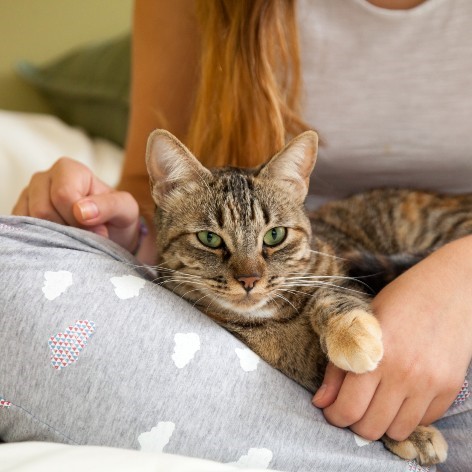If your cat’s worming schedule has become lax, now is the time to start treatments again in order to protect them from intestinal worms.
Types of Worms
There’s not just one type of worm that affects cats – the most common varieties are roundworm, hookworm and tapeworm. While the first two tend to be transmitted by contaminated water, soil, the kitty litter tray or by the mother cat’s milk, tapeworm is passed on when a cat eats tapeworm-infested fleas or when they hunt worm-infested rodents.
Signs your Cat has Worms
You can’t always tell if your cat has worms as they can hide illness, however watch out for signs such as weight loss, vomiting, constipation, bloody stools, dullness of their coat and difficulty breathing. As these can also be signs of other illnesses, consult your vet.
Treating Worms in your Cat
While you can treat worms as they occur, it’s important to be proactive in preventing them in the first place by having a regular worming treatment for your cat. This is because the infested cat can show no obvious symptoms while still being able to transmit the worms to other animals including humans.
If you have more than one cat, as worms can easily pass between them, it’s important to remember to treat both of your cats at the same time.
As you will want to protect your cat from these different varieties, it’s important to check the worming treatment you’ve chosen addresses all three. If you know what type of worm you’re dealing with (such as if your kitten has tapeworm), you might be able to use a product to target this specifically – consult your vet on which product to use.
Worming treatments come in the form of syrups, pills, spot ons and pastes, so you can find the best option for you and your cat.
It is recommended that you worm your cat at least every three months. Young kittens need to be wormed more regularly. Check the instructions on the product packaging or follow your vet’s advice.
Keeping it Clean
You can also help prevent worms by keeping your home clean, regularly washing your cat’s bedding and cleaning their food and water bowls.
This can reduce their exposure to worms and will also give you a better idea of your cat’s health – you’ll be able to have a closer look at their blankets as to how much fur they’re shedding, or whether they’ve been using the litter tray more or less frequently.
If you have an outdoor cat who uses the garden as their litter tray, regularly scoop out and depose of the faeces to prevent contamination. While indoor cats are at less risk of getting worms, they can still occur as worm eggs can attach to our clothing and shoes. Regularly worm your indoor cat to be on the safe side.





